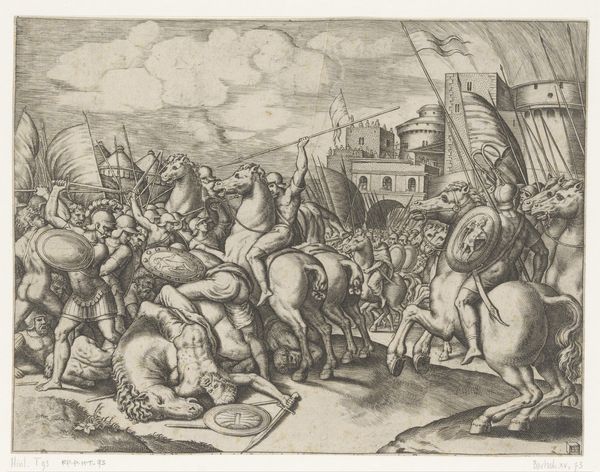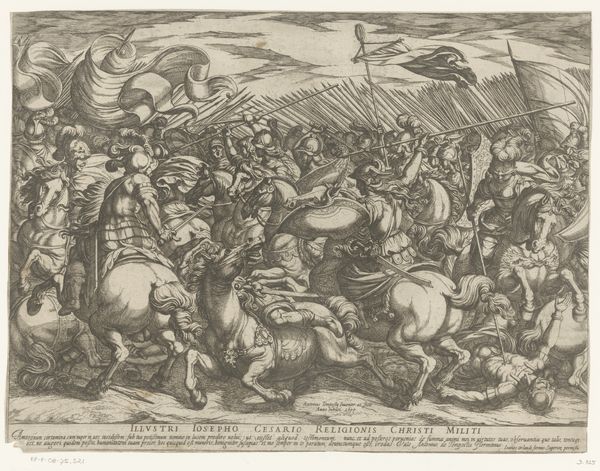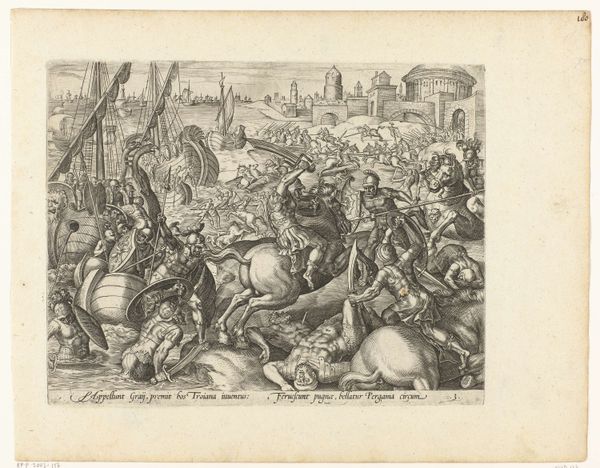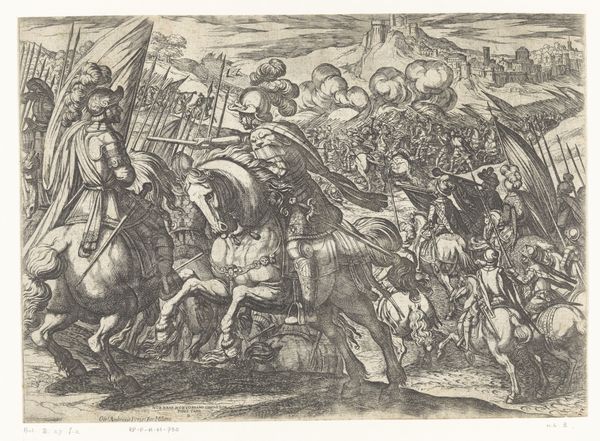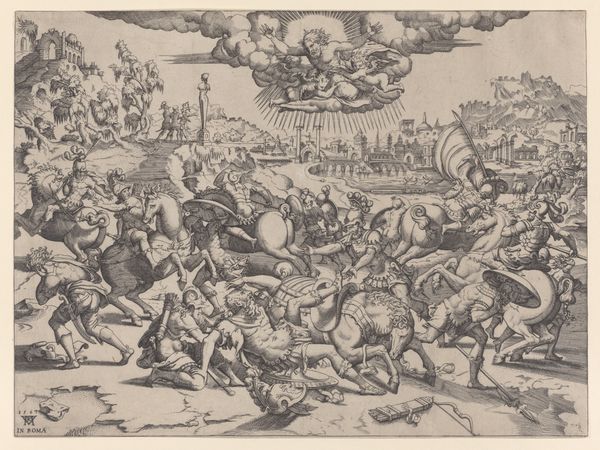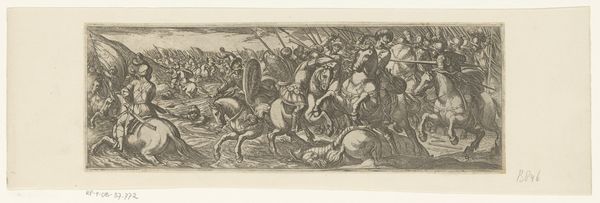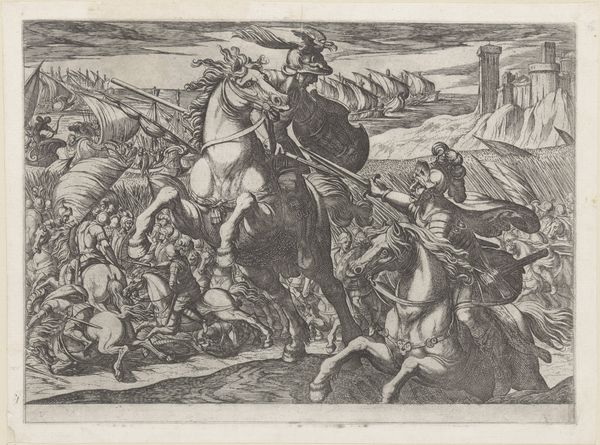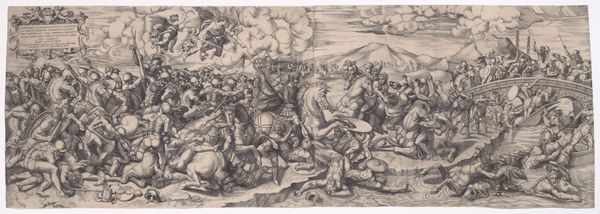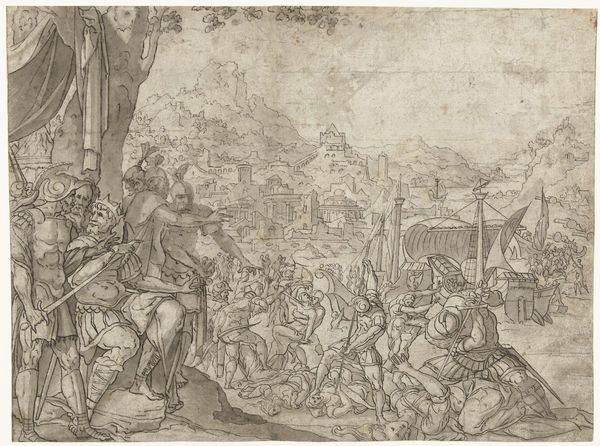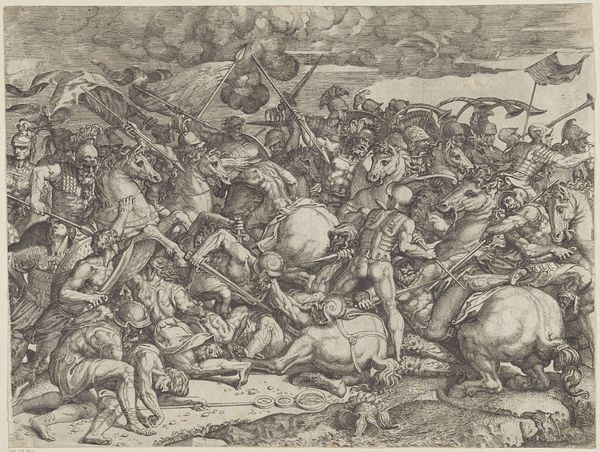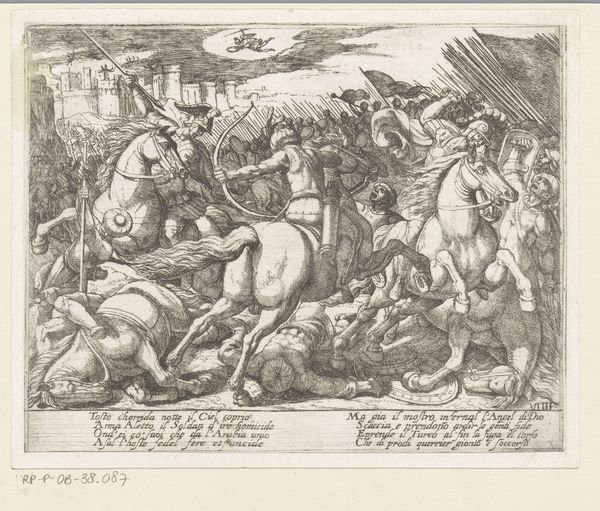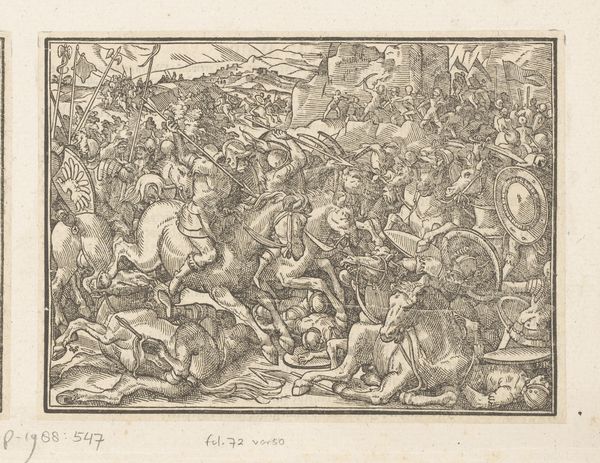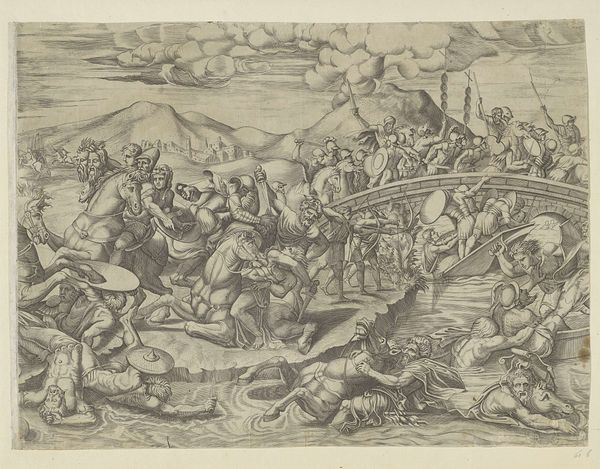
drawing, print, engraving
#
drawing
#
medieval
#
narrative-art
# print
#
figuration
#
11_renaissance
#
horse
#
line
#
history-painting
#
engraving
Dimensions: Sheet (trimmed): 12 5/8 × 17 5/8 in. (32 × 44.7 cm)
Copyright: Public Domain
Curator: Editor: Welcome to the Met. We're looking at Jean Mignon's "Battle Before Troy," an engraving from the mid-16th century. The scene is so dense; bodies and horses crammed together. What can you tell me about this print? Curator: Let’s consider this engraving in the context of 16th-century printmaking. The availability of prints allowed for wider dissemination of stories, styles, and yes, even propaganda. Notice the process of meticulous, repetitive mark-making, the intense labor invested in creating these images, and what would become of them? Editor: Do you mean its mass production? Curator: Exactly! Printmaking enabled the commodification of imagery like "The Battle Before Troy." Suddenly, owning a battle scene, filled with "classical" figures, wasn’t just for the elite. How do you think the change in materials affected subject matter? Editor: It let the artist communicate battle themes to the wider audience, that the elite previously only could enjoy? Curator: Precisely. And that brings us to how engravings democratized art and allowed for shared social meaning. Now think about Mignon, painstakingly incising these lines, participating in a burgeoning market for imagery… a skilled labor! The artistic innovation is within Mignon's practice, technique and social context of his art. What do you make of that now? Editor: Now, thinking about all the labour and technicalities that had to go into this production, and its effect in disseminating imagery… I didn’t appreciate how innovative an artwork like this was. Thanks for sharing!
Comments
No comments
Be the first to comment and join the conversation on the ultimate creative platform.
